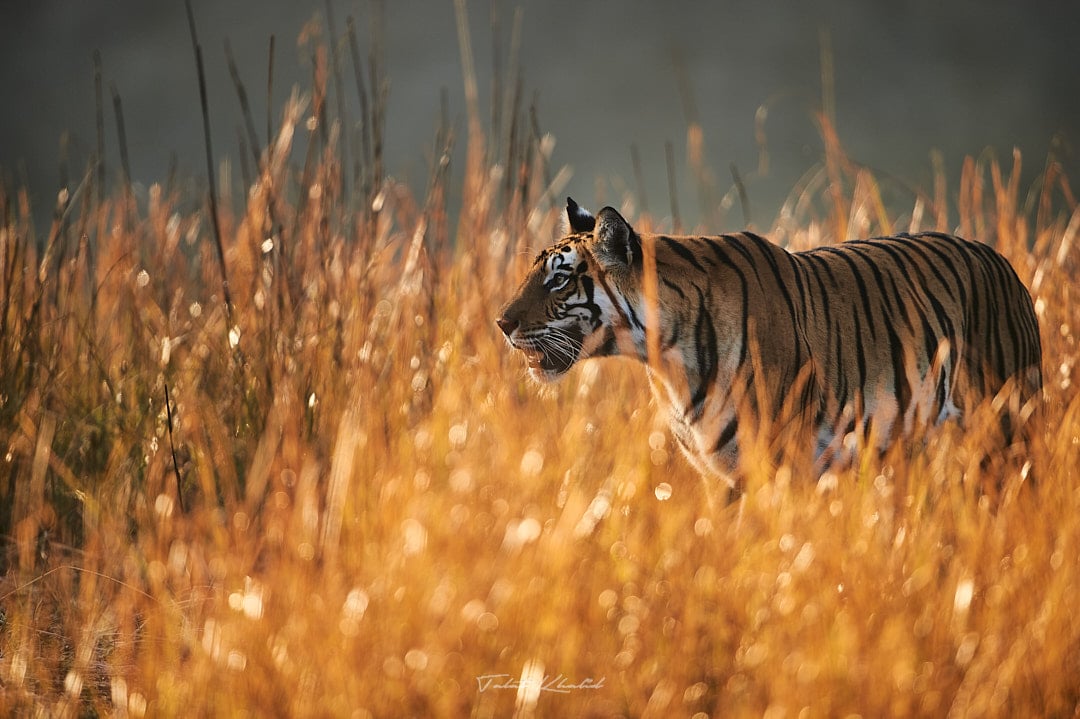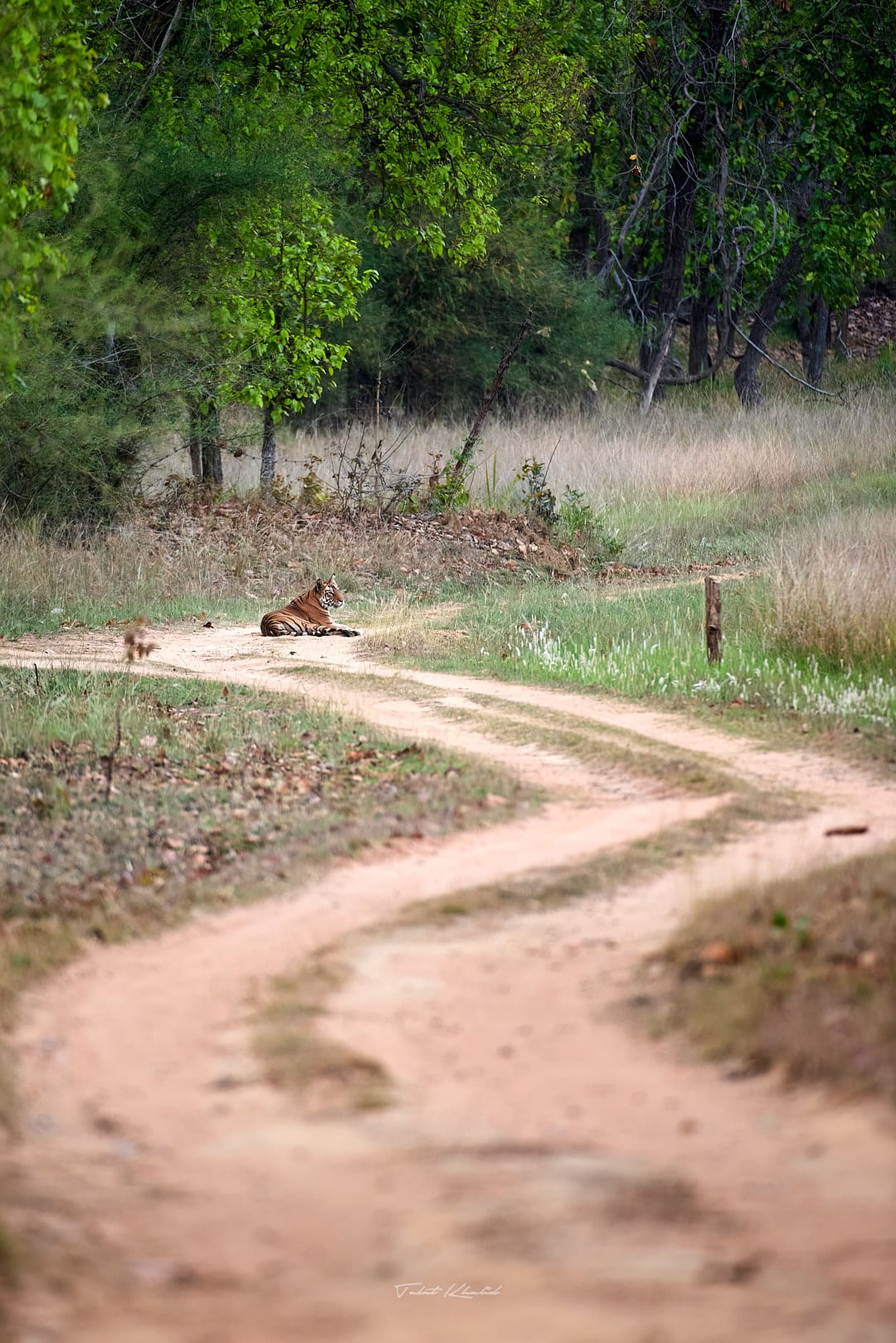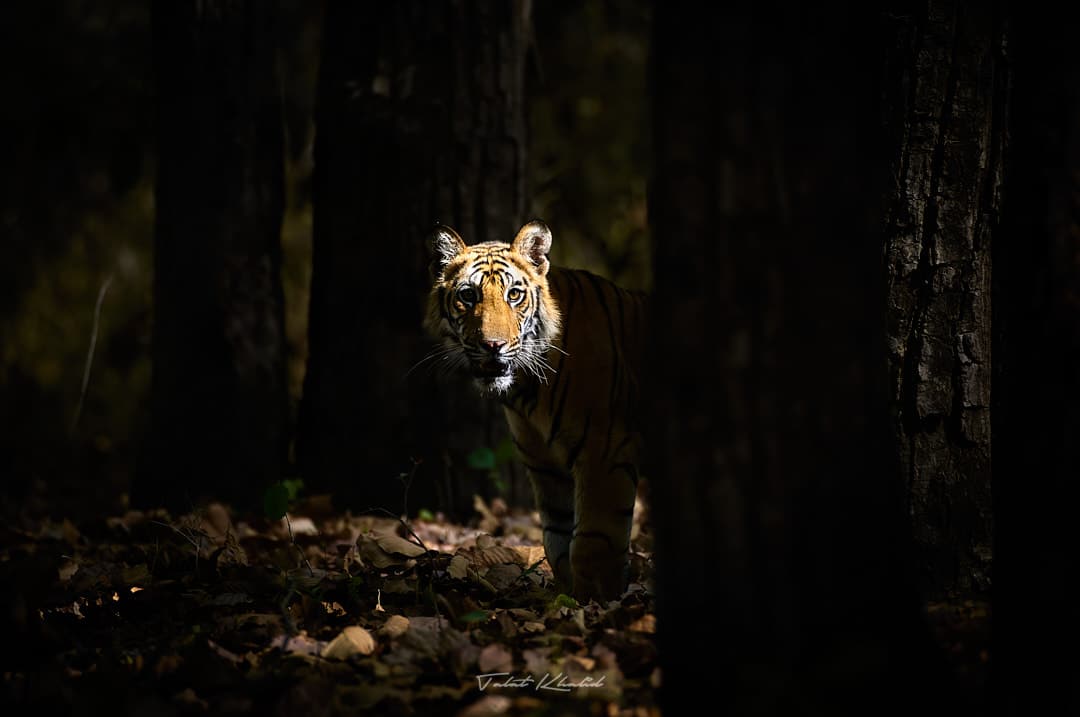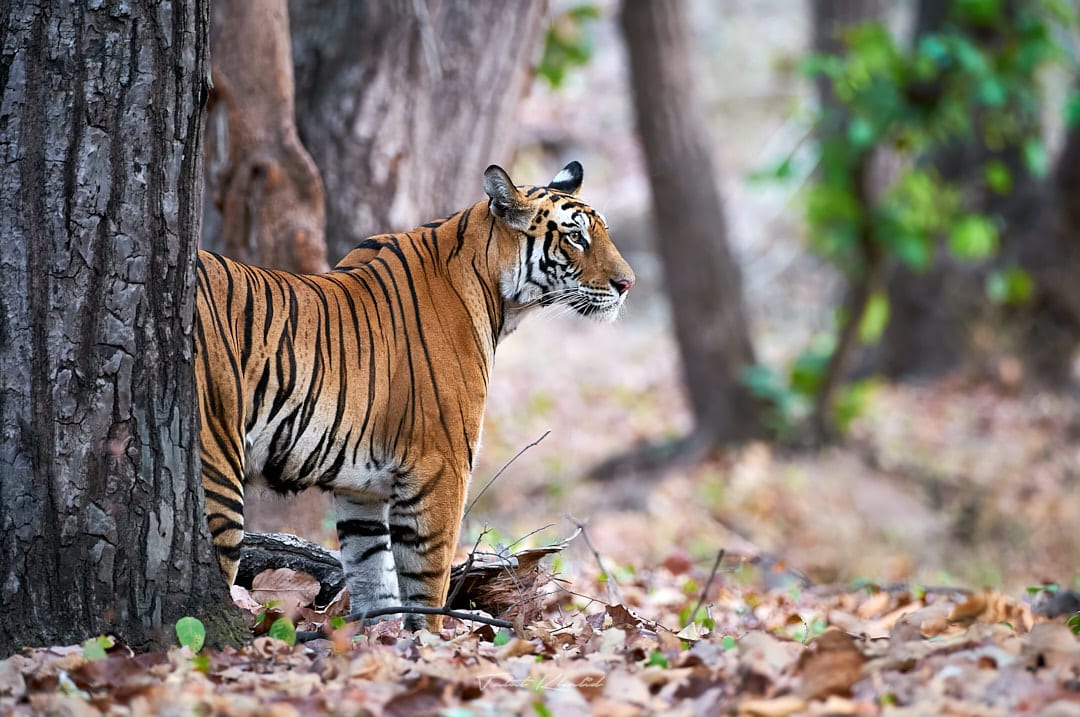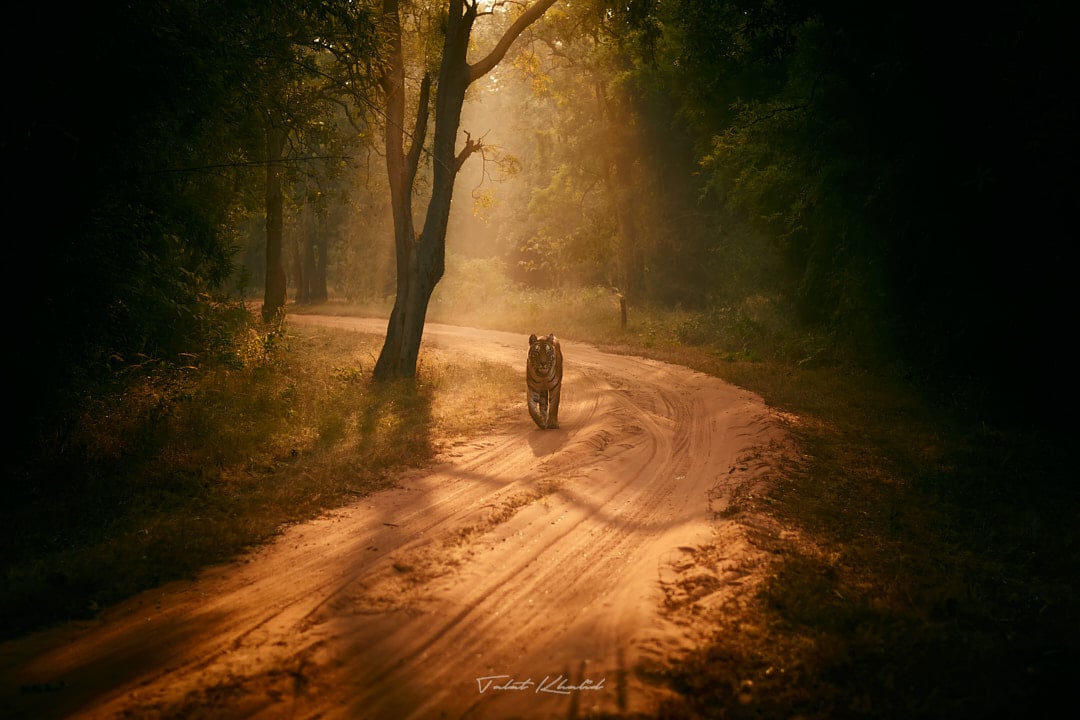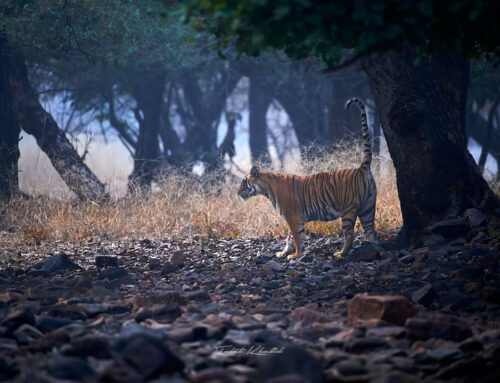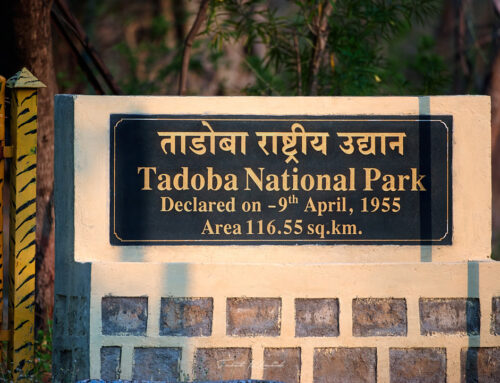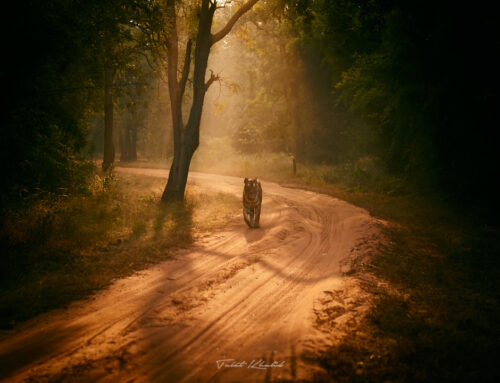Bandhavgarh National Park
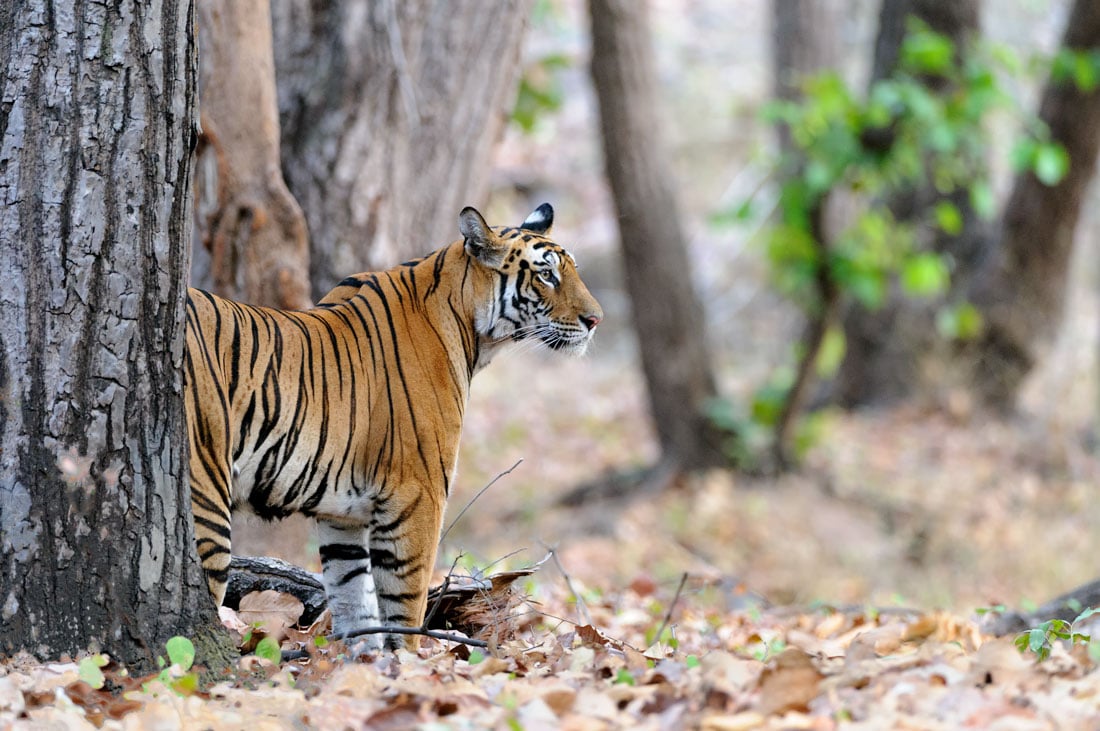
Table of contents
Introduction
Bandhavgarh National Park is the most popular tiger reserve in India. It is one of the favorite parks for tiger photography and filmmaking.
It is located in the Vindhya and Satpura ranges of central India. It is mostly in the Umaria district and partly in the Katni district of Madhya Pradesh. It is known for its high density of tigers and is often called the “tiger land” of India.
The Bandhavgarh National Park, The Panpatha Wildlife Sanctuary, and Buffer Zones combined make the Bandhavgarh Tiger Reserve.
The total area is approx 1200 sq km out of which the national park is approx 450 sq km, the sanctuary approx 250 sq km, and the buffer of approx 460 sq km.
Bandhavgarh National Park was formed in 1968 with approx 100 sq km. Later around 450 sq km was added in 1982. Panpatha became a sanctuary added in 1983. All three areas combined formed the Bandhavgarh Tiger Reserve in 1993.
Landscape
Bandhavgarh is very scenic, with vast grasslands, high cliffs, rugged terrain, hills, and valleys.
There is also a 2000-year-old fort on top of the highest hill. The park is also home to many sacred hills and hillocks that are important to the local people. It also has many man-made caves.
The park has a diverse mix of habitats, including rocky hills, dense forests, and low-lying swampy plains. This supports a wide variety of animals, from tiny insects to the majestic tigers.
The Bandhavgarh hill is flat-topped and has vertical cliffs that are perfect for nesting birds of prey, such as the long-billed vulture and the Shaheen falcon.
The park is largely covered in lush vegetation, primarily sal trees (Shorea robusta) which dominate the landscape. These tall, straight trees form a green canopy, creating a serene ambiance. Along with the sal parts of the forest are bamboo, adding to the mixed vegetation.
Bandhavgarh features vast grasslands and meadows. Most of the big Meadows were created after villages were moved out of the park and the cultivation lands later became meadows. These open spaces provide important grazing areas for herbivores and are good spots for wildlife viewing.
The park has several seasonal streams, along with many small waterholes. These water sources are vital for the park’s various wildlife, especially during the dry months. The park has also recently provided solar-powered pumps that fill some of the waterholes. In summer these waterholes are prime places for sighting tigers and other wildlife.
History and Legends
Bandhavgarh was once the center of the rulers of Rewa State. The name of the reserve comes from the Bandhavgarh Fort, which is situated on a hill. Legend has it that the fort was given to Laxmana, the brother of Rama, by Rama himself. This is why the fort is called Bandhavgarh, which means “brother’s fort” in Hindi.
The Bandhavgarh Fort has a long and turbulent history. It has been ruled by many different dynasties, including the Bharhivas Vakatakas, the Sengaras, the Kalchuris, and the Baghels. The fort was given as dowry to the Baghel clan in 1494, and it has remained with them ever since.
The famous saint-poet Kabir stayed in the Bandhavgarh Fort during the reign of Maharaja Virbhanu Singh. The fort’s ruler at the time, Maharaja Rama Chandra, was a contemporary of Akbar. He gave protection to the begum of emperor Humayun when Shershah Suri was pursuing him. Akbar was so impressed by the Maharaja’s hospitality that he issued silver coins in the name of the Bandhavgarh Fort. The Maharaja also presented his famous musician-singer Tansen from Bandhavgarh to the court of Akbar as a token of affection.
The Baghelas lived in Bandhavgarh until 1617 AD when they moved to Govindgarh. The fort and villages were abandoned, but the forest remained protected as it was used for hunting by the rulers of Rewa. This prevented the forest from being degraded and its wildlife was protected until it became a national park in 1968.
There are 49 man-made caves in the Bandhavgarh Tiger Reserve. They were carved out of sandstone and used as shelters by people. Some of the caves have inscriptions, drawings, and relic images that date back to the Mauryan period. There are also numerous impressions of tiger pugmarks on the ceiling of a low-lying cave, which the locals call “Baghdalaka.”
Religious Importance
Huge statues, including sculptures symbolizing some of the incarnations of Lord Vishnu, are seen in the Fort Plateau. The statues of Narsimha, Hanuman, Shiva, Varaha, Bhagvaha, Matsya, Kachchap, and Bandhavadheesh, carved out of single rocks made of sandstone, were built during the 10th-11th century AD. Down below, a large carving in sandstone of Lord Vishnu reclining on the serpent over a perennial water tank is the ‘Shesh-shaiya’, the biggest of all, and an attraction for tourists. Amazingly large tanks cut in sandstone and wells are also seen in the Fort plateau.
The Bandhavgarh Fort has many statues of Hindu deities. These statues were carved out of sandstone in the 10th or 11th century AD. The most famous statue is the Shesh-shaiya, which is a carving of Vishnu reclining on the serpent Sheshanaga. The Shesh-shaiya is located over a yearly water tank and is a popular attraction. There are also many large tanks and wells cut into the sandstone in the fort plateau.
Every year, many devotees visit the Bandhavadheesh temple inside the fort on the occasion of Ramnavami and Krishna Janmashtami. On Janmashtami, the number of devotees visiting the temple can reach up to 20,000.
Wildlife of Bandhavgarh National Park
Bandhavgarh Tiger Reserve is home to many animals, including tigers, leopards, sloth bears, and wild dogs. It also has a variety of other animals, such as chital, sambhar, barking deer, chinkara, chausingha, nilgai, and wild pig. Porcupine, Mongoose, Civet, Jungle Cat, and Hares are also seen.
In recent times Indian Bison or Gaurs (the largest oxen in the world) were relocated from adjacent Kanha National Park. Wild Elephants from some eastern parks have also arrived and made their home in Bandhavgarh.
There are approx 200 species of birds recorded in Bandhavgarh. Some are migratory.
- Bengal Tigers (Panthera tigris tigris): Bandhavgarh is famous for its successful population of Bengal tigers. It used to have one of the highest tiger densities in India, making it an ideal destination for tiger lovers and wildlife photographers. The Tiger population has been growing again for the last few years.
- Leopards (Panthera pardus): Bandhavgarh also has a good population of leopards. They can be sighted in the rocky areas of the park.
- Spotted Deer (Axis axis): Locally known as chital, the spotted deer is one of the most commonly sighted herbivores in Bandhavgarh.
- Sambhar Deer (Rusa unicolor): The sambhar deer, with its impressive size and unique antlers, is another prominent herbivore in the park. They are often found in the denser forested areas.
- Barking Deer (Muntiacus muntjak): Also known as the Indian muntjac or barking deer, this small, solitary deer species is commonly seen in Bandhavgarh. They have a unique alarm call that sounds like a bark.
- Indian Bison (Bos gaurus): Bandhavgarh is home to Indian bison, also known as gaur. The largest oxen in the world. Males can grow up to a ton. They recently bought from nearby Kanha National Park and are thriving.
- Indian Elephant (Elephas maximus indicus): Bandhavgarh has now become home to a sizable no of elephants. Some years ago these elephants migrated from some nearby sanctuaries. Even after a lot of efforts from the forest dept, they have not left. They are now considered permanent residents of the park. You can sometimes see them in big waterholes in the park, especially in the evening in summer.
- Wild Boar (Sus scrofa): Wild boars are plenty in Bandhavgarh and are an important prey species for predators like tigers and leopards.
- Various Species of Birds: Bandhavgarh is a birdwatcher’s paradise, with over 250 species of birds recorded in the park. This includes both resident and migratory birds.
- Reptiles and Amphibians: The park is also home to a variety of reptiles and amphibians, including snakes, lizards, and frogs. Prominent species include the Indian python, Russell’s viper, and the common monitor lizard.
Zones of Bandhavgarh National Park
Bandhavgarh National Park has 3 zones open for tourism: Tala Zone, Magdi Zone, and Khitauli Zone. Tala Zone 1, Magdi Zone 2 & Khitauli Zone 3.
Tala was the original zone for tourism. As tourism and popularity grew the dept opened the second zone adjacent to Tala called Magdi Zone.
Later they opened another on the opposite side known as Khitauli.
Over the years the animals of all these areas have become habituated to tourism and safari vehicles.
For the last few years, all 3 zones have been equally good.
A few buffer areas were opened adjacent to the core zones, which are also open for safaris.
Photography In Bandhavgarh
You have to Book your Safaris 4 months in advance to get the best zones.
For Photography, you will need a 400-600 mm lens and a good camera. Another short lens like 70-200 or similar is ideal for when wildlife is close. Bean Bag or Monopod is also a good idea.
If you are a photographer a few Full Day Permits is recommended.
For photography, a 3-5 night stay is a must. This is so you get to see the areas and get to maximize your chances.
All zones are equally good. Zone 1 i.e. Tala is pretty and you should visit at least once, Tiger sightings have reduced over the years but recently there have been signs of improvement, especially near Sidhbaba and Gopalpur Pond. Zone 2 and 3 have been better for the Tigers.
This is wildlife we are talking about so the situation keeps changing.
For more details, you can Read Tiger Photography: A Guide to Capturing these Majestic Cats
Safari in Bandhavgarh
Bandhavgarh offers safaris in a 4×4 vehicle called gypsy and Canter a 20 seater minibus. Elephant ride has been stopped for many years now.
Bandhavgarh National Park has 2 safaris, one in the Morning and one in the Afternoon. On Wednesday Afternoon the core zones are closed for safaris. However, the Buffer zones are open for safari. Apart from normal safaris if you are a photographer you can get a Full Day Permit for photography.
Full Day Permit for Photography.
This is a special permit for professional photographers and videographers. As the name suggests this permit is for an entire day for one photographer and two non-photographer assistants. It has some special features like 15 minutes early entry and 15 min late exit. Apart from that, all zones are accessible. The price is quite steep for a day however if you can afford it can be worth especially in winter and when tigers have cubs. The permits can be acquired by submitting a request and Draft of payment in the Bandhavgarh office in Umaria.
For Details Full Day Safari Permit for Photography
Night Safari
Night safari is also possible in buffer areas. Dhamokar is quite a good buffer. Many have seen tigers, leopards & sloth bears on night safaris.
For Details Night Safari in India – A Thrilling Experience
Best time to visit Bandhavgarh.
In most tiger parks in India, the best time is summer. The forest waterholes shrink and foliage is less. The animals including tigers visit the remaining waterholes. Tracking them becomes easier.
Mar – June is the summer season. For frequent sightings, this is the time.
Once you have visited in summer you can also visit in winter as the weather is very cool and the forest is green and the early mornings misty. Finding Tigers is difficult but when you find one it’s worth the effort.
Nearby Attractions
- Bandhavgarh Fort: Situated within the national park. Currently, this is closed for people except on particular festivals. It offers panoramic views of the surrounding forests.
- Shesh Shaiya: You can visit this place on your safari in Tala Zone 1. This is an important archaeological site located within the park. It features a 65-foot-long statue of Hindu Diety Vishnu reclining on a seven-headed serpent. It’s a significant religious and cultural site for Hindus.
- Khajuraho Temples: The world famous Khajuraho temples can be reached in 6-7 hrs drive.
- Kanha National Park: This is a bigger park than Bandhavgarh and is 5-6 hrs drive. This is also known as the Jungle Book inspiration of Kipling.
How to Reach
The closest Airport is Jabalpur 3-4 hrs drive.
Nearest Railway Station is Jabalpur (3-4 hrs), Katni (2 hrs) and Umaria (40 mins).
Recommended Tours & Safaris
Bandhavgarh Tiger Photography Tour
Focus on Tigers at Bandhavgarh and Ranthambore
Land of Tigers – Bandhavgarh and Tadoba Tour
Conclusion
Over the years the park has changed both in wildlife and tourism. However, this is still one of the best parks for Tiger Watching and Photography.
